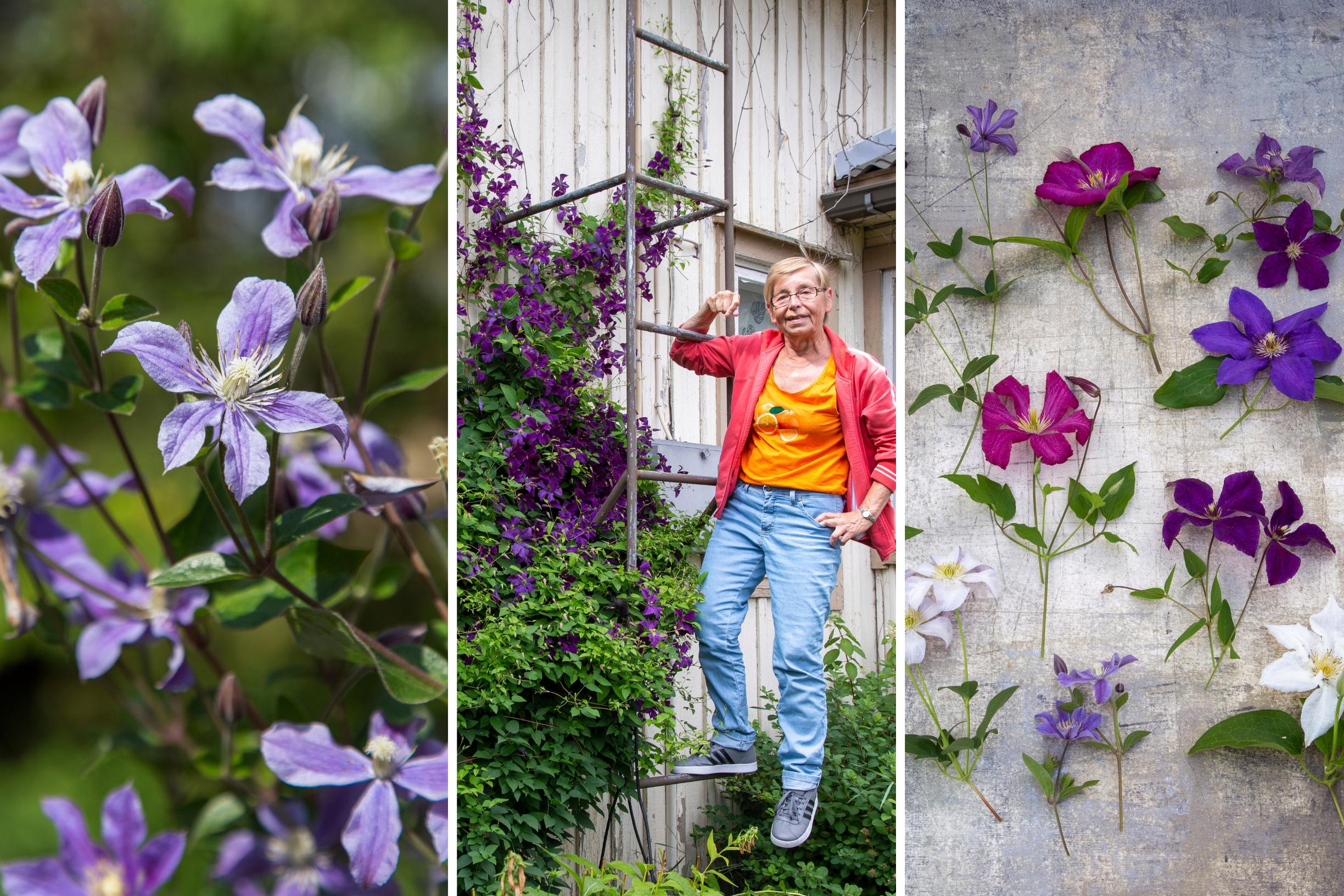
A whopping 60 clematis: Merja’s sure-fire tips for heavy clay soil and winter survival
Finnish Merja Salminen planted her first clematis in her yard 25 years ago. Now she has dozens of them, blooming right into late autumn. She even enlists chickadees and other birds to help care for her plants.
Merja, tell us how your enthusiasm for clematis began.
By nature, I’m the kind of person who wants to try everything. I’ve gone through rose mania, peony mania, and annual-flower mania—my clematis craze simply continues that theme. I planted my first clematis about 25 years ago; it was an alpine clematis. Then came ‘Jackmanii’ and other large-flowered clematis, and there’s still no end in sight.
I currently have about 60 different clematis in my garden. There’s a bit of everything: Alpine clematis and its relatives, clematis 'Paul Farges', downy clematis, large-flowered clematis, countless purple clematis, plus the herbaceous ground clematis and clematis mandshurica.
Which cultivars are showy, easy, and foolproof in your opinion?
The ornamental clematis ‘Polish Spirit’ is hardy, low-maintenance, and has surprisingly large flowers for a clematis. Another reliably heavy bloomer is the clematis ‘Arabella.’ Its shoots don’t cling to supports, so I wrap them in netting.
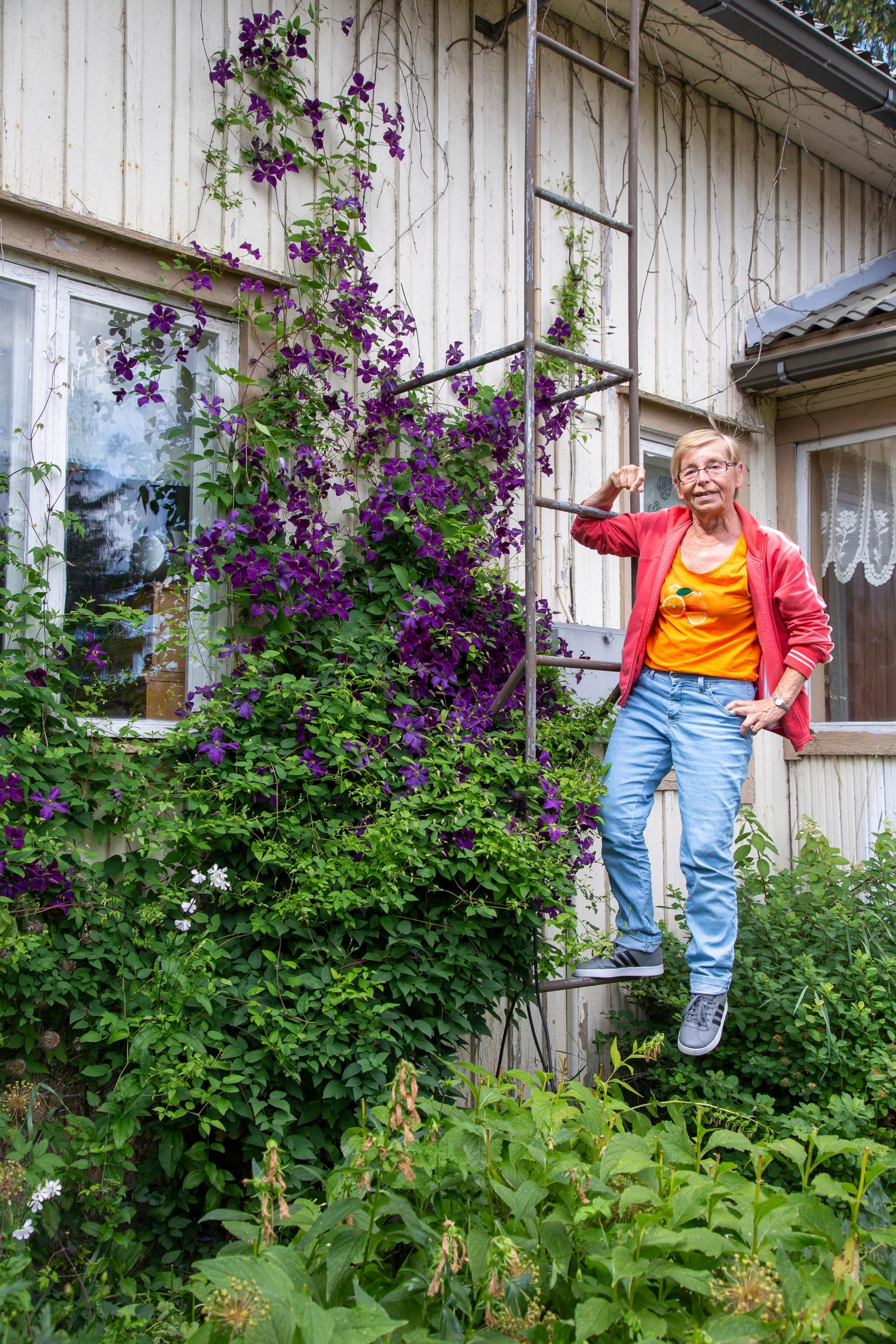
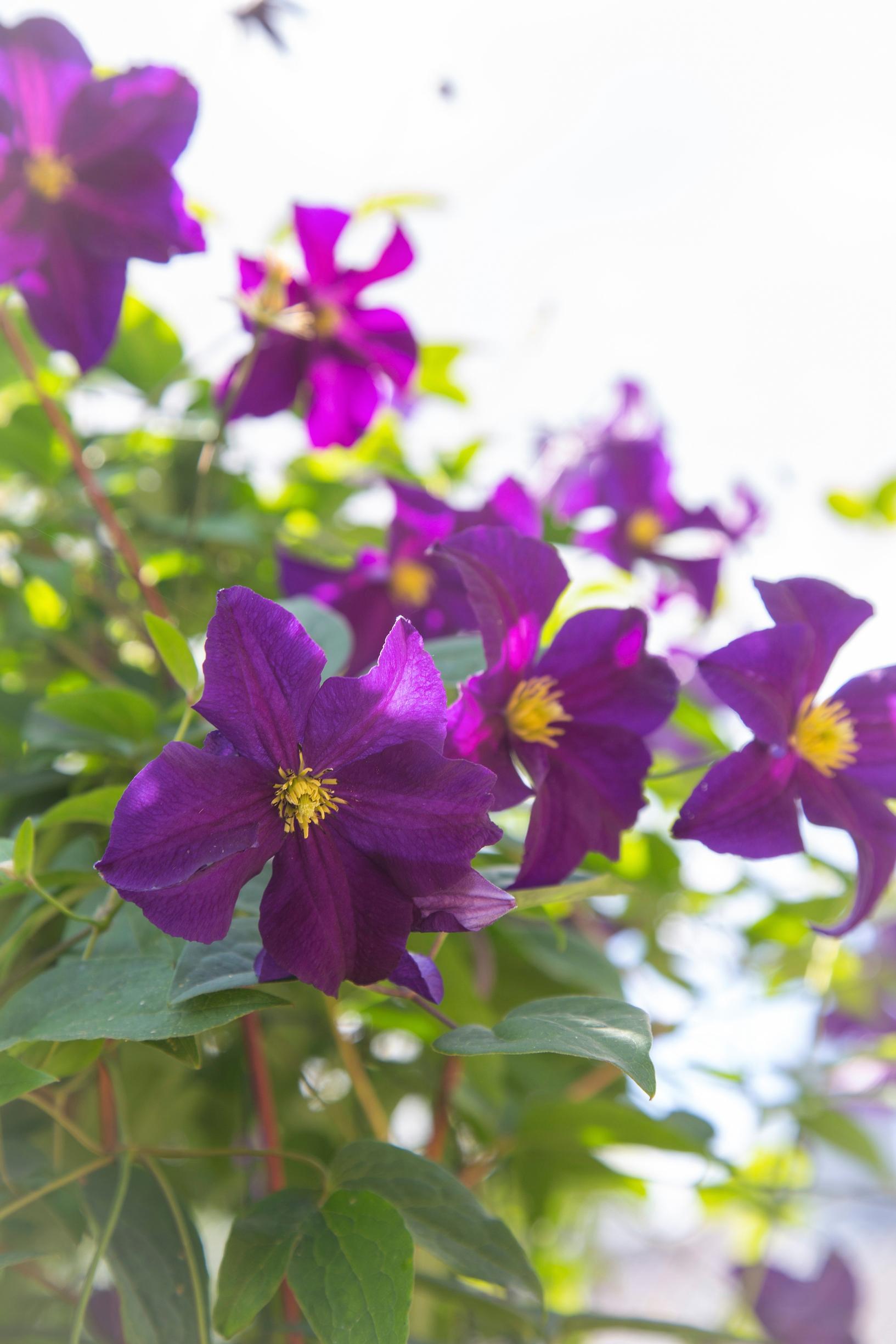
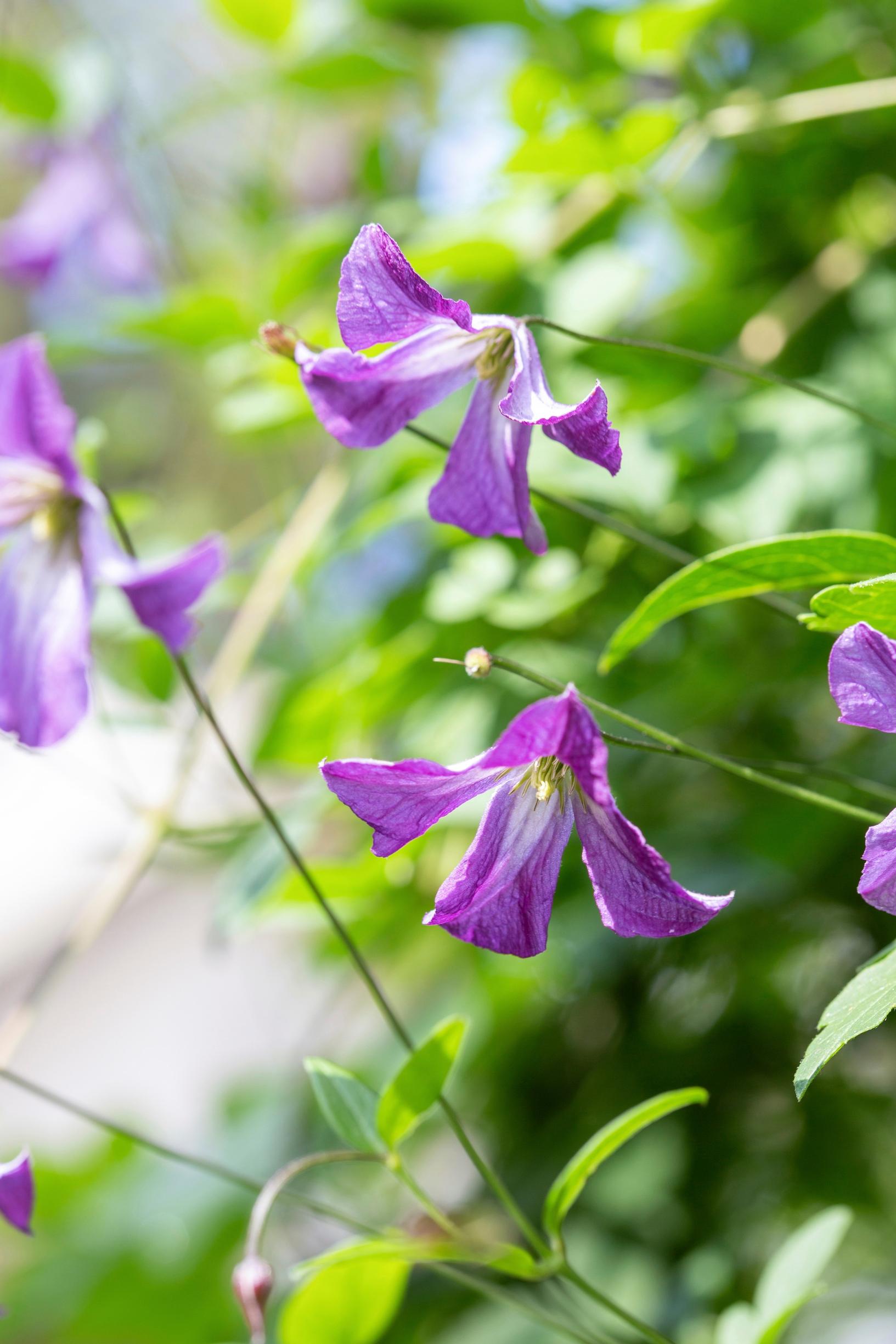
How do you prepare the planting spot for clematis?
The soil in my yard is so full of clay you could open a brick factory here. I dig a 50-centimeter (20-inch) hole for each plant and put coarse gravel or crushed brick at the bottom for drainage. I then enrich the clay with compost and add chicken manure as a long-term fertilizer.
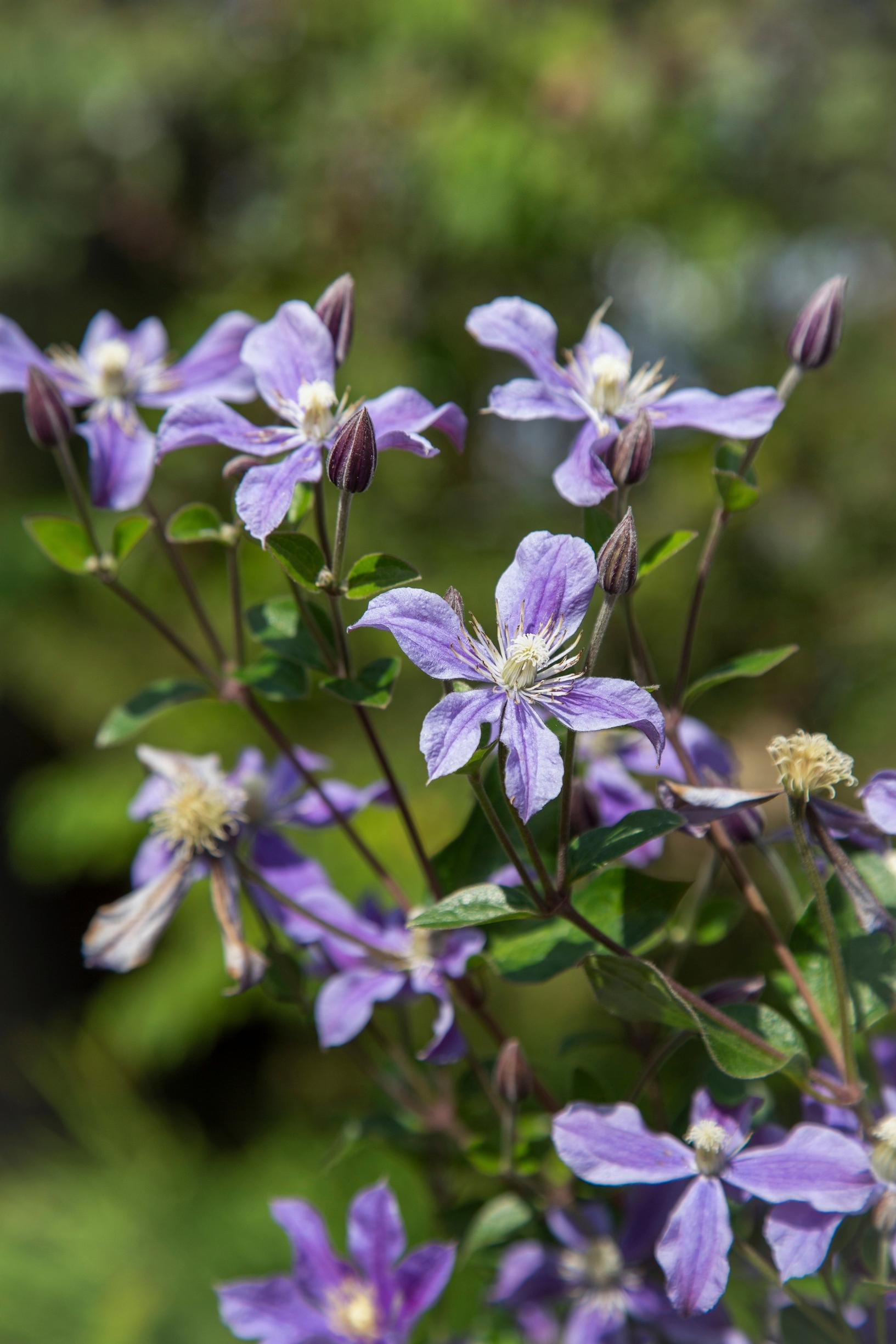
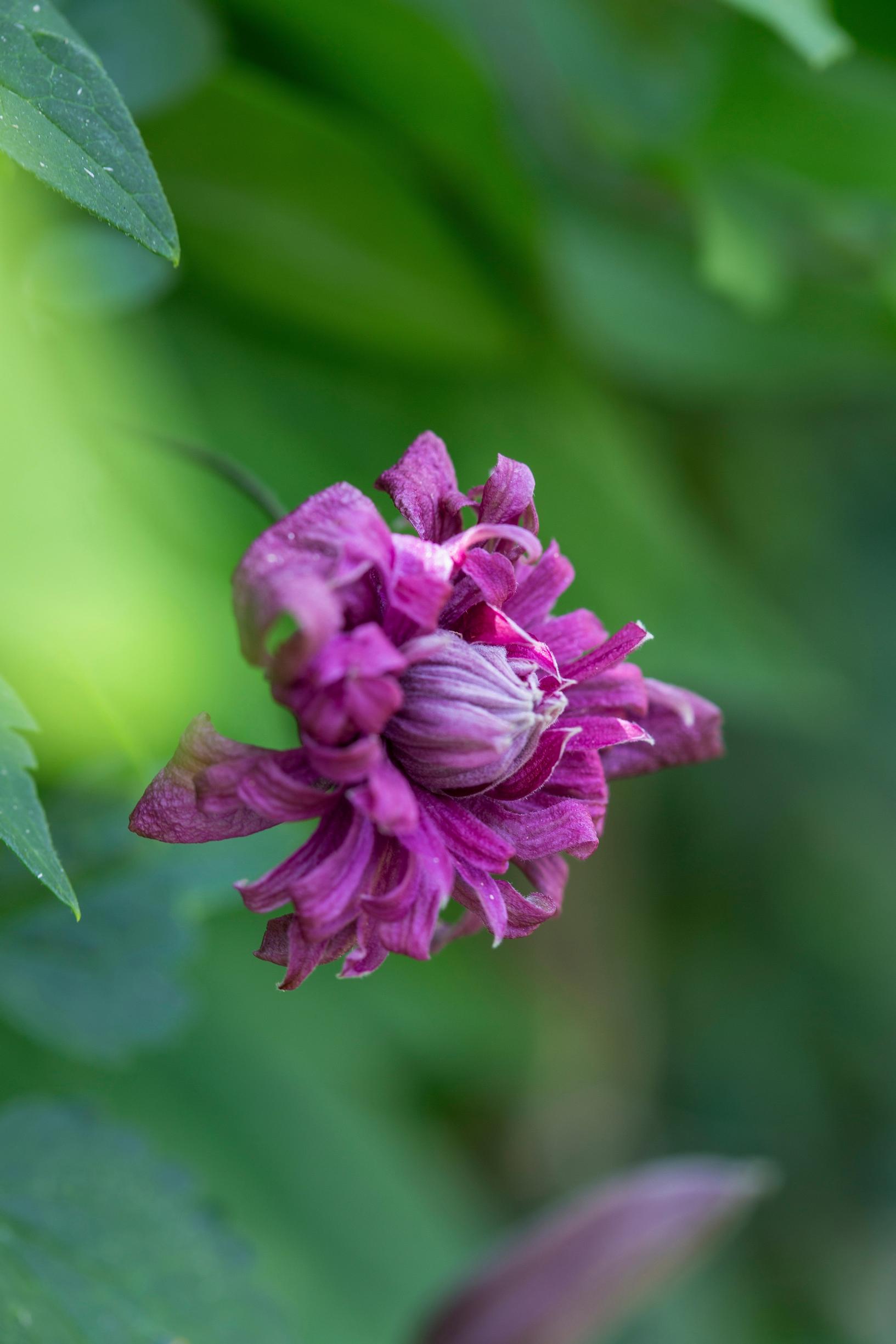
Where do the clematis grow in your yard? How do you support the vines?
I have clematis along the sunny walls of my house and outbuildings, as well as on supports 3–4 meters (9.8–13.1 ft) tall, which I call my totem poles. They grow to remarkable sizes there and bloom impressively. I plant two or three varieties on the same support, and on supports measuring 1.5 meters (5 ft) in diameter, I sometimes plant as many as five varieties. Clematis enjoy having company and can get a bit lonely if left by themselves.
The best support is fencing with large openings, so the vines can climb without help. My clematis are free to grow as they please. I attach netting to the posts with screws, so it’s easy to detach and remove in fall.
In my largest clematis mass, the support is a five-meter (16 ft) ash tree that died while standing. It offers enough height and sturdy branches for the vines to climb.
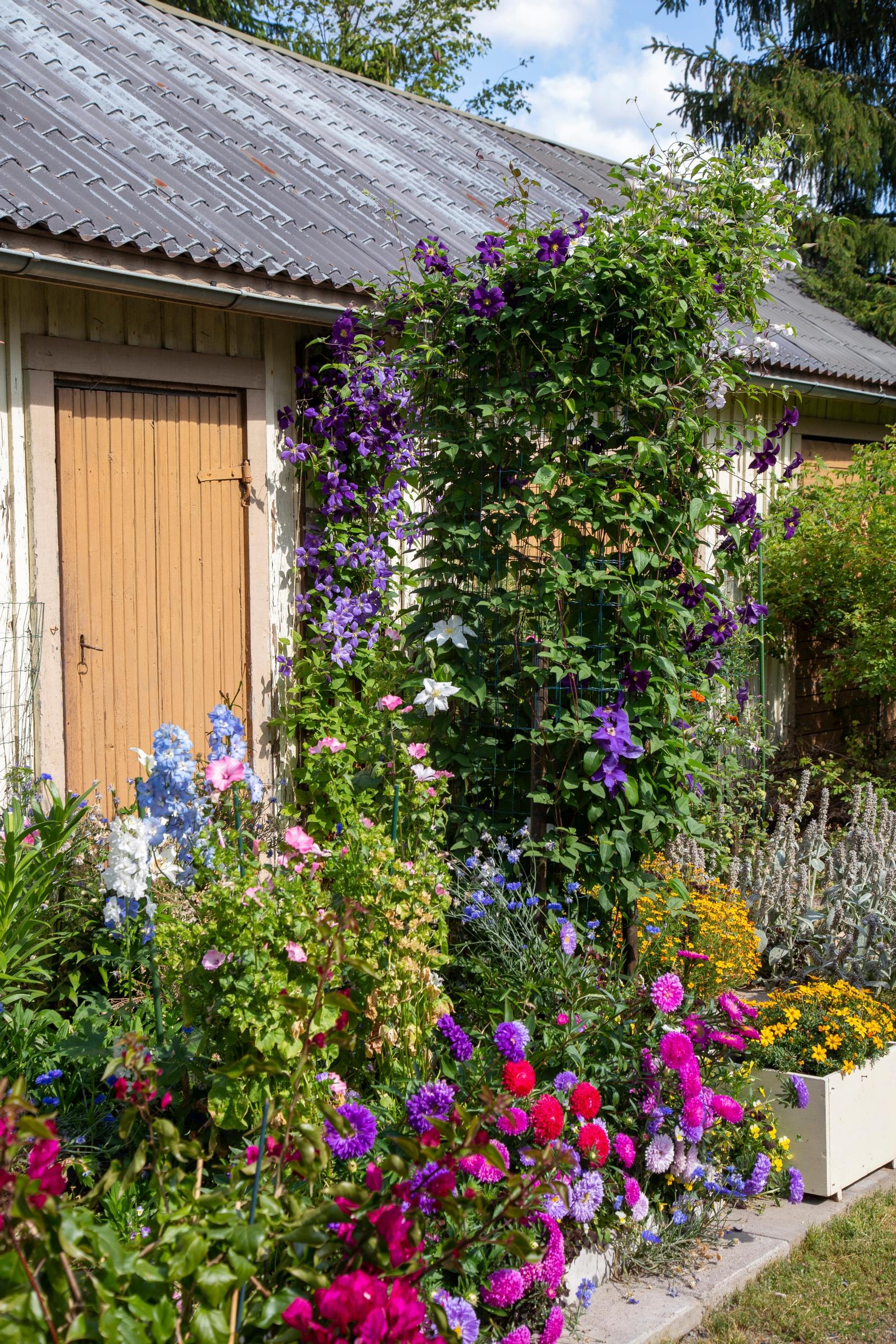
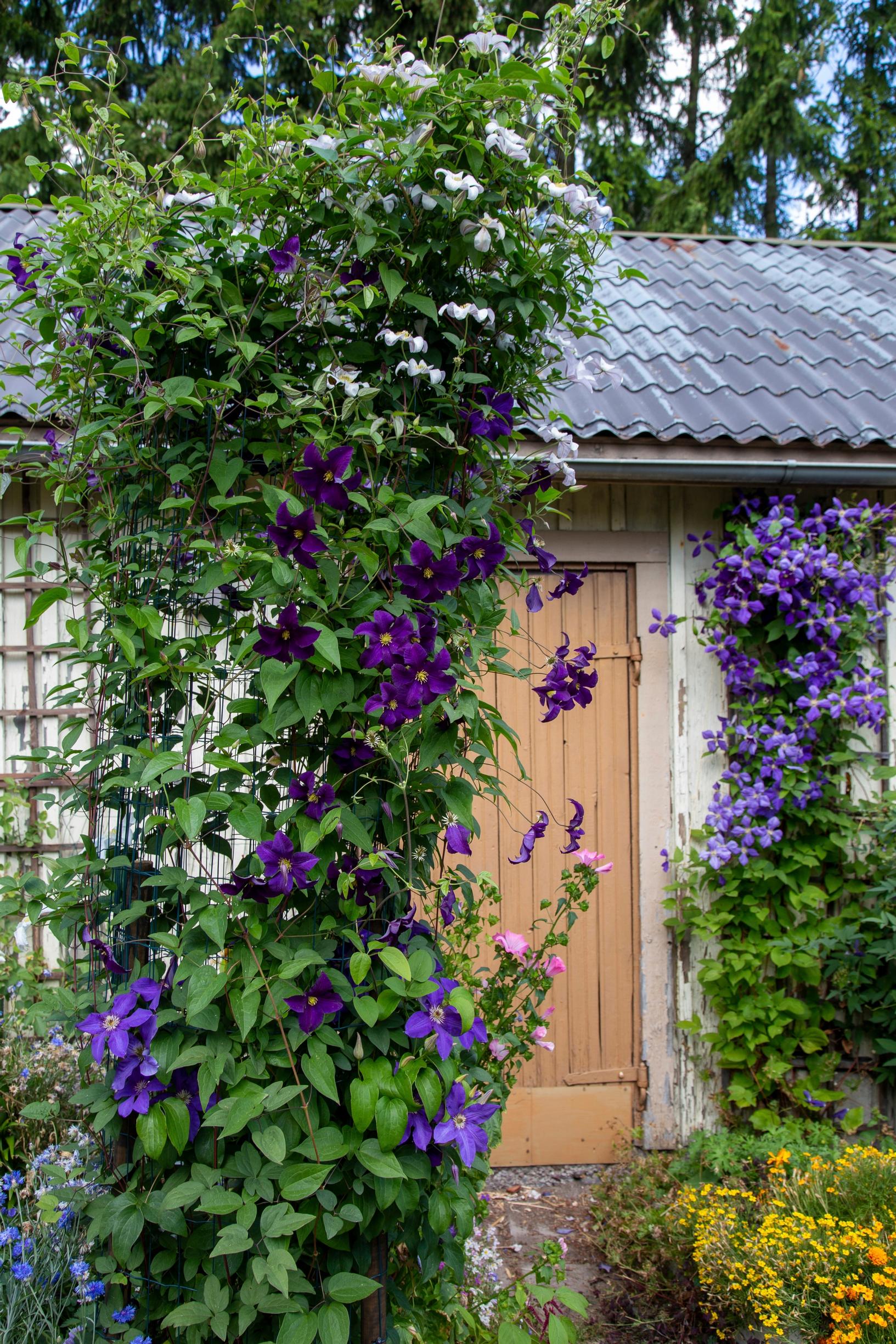
What kind of care do clematis need?
They need watering all summer long. I haul so much well water in my watering can that my knuckles practically scrape the ground. For those on pillars, I give them 30 liters (8 gallons) of water twice a week during dry spells.
Clematis are heavy feeders and need plenty of nutrients to bloom profusely. Early in spring, I give them an all-purpose fertilizer plus a couple of handfuls of chicken manure for each plant. I cover the pellets with soil so the nitrogen doesn’t evaporate. Then I also use liquid fertilizer every time I water.
Well-established plants with a generous root ball have the best shot at thriving. Smaller seedlings might be cheaper, but they lack a robust root system.
How do you avoid winter damage in clematis?
In fall, I cut large-flowered clematis back to just over half a meter (20 inches) and then mound sand-mixed soil around the base. I picked up this winter-protection tip from an article about clematis bred by the Estonian Kivistik family, and it’s worked wonders—my clematis have overwintered beautifully.
How long does the clematis flowering season last?
The show begins with Alpine clematis in early summer. Next up are the ornamental clematis ‘Polish Spirit’ and the clematis ‘Arabella,’ followed by other viticella and large-flowered varieties. Typically, their peak is from late July to mid-August, but they keep going well into fall. In mild autumns, the ornamental clematis ‘Madame Julia Correvon’ may still be blooming in October or November.
All clematis thrive best in warm summers. They still bloom in rainy summers, just less enthusiastically.
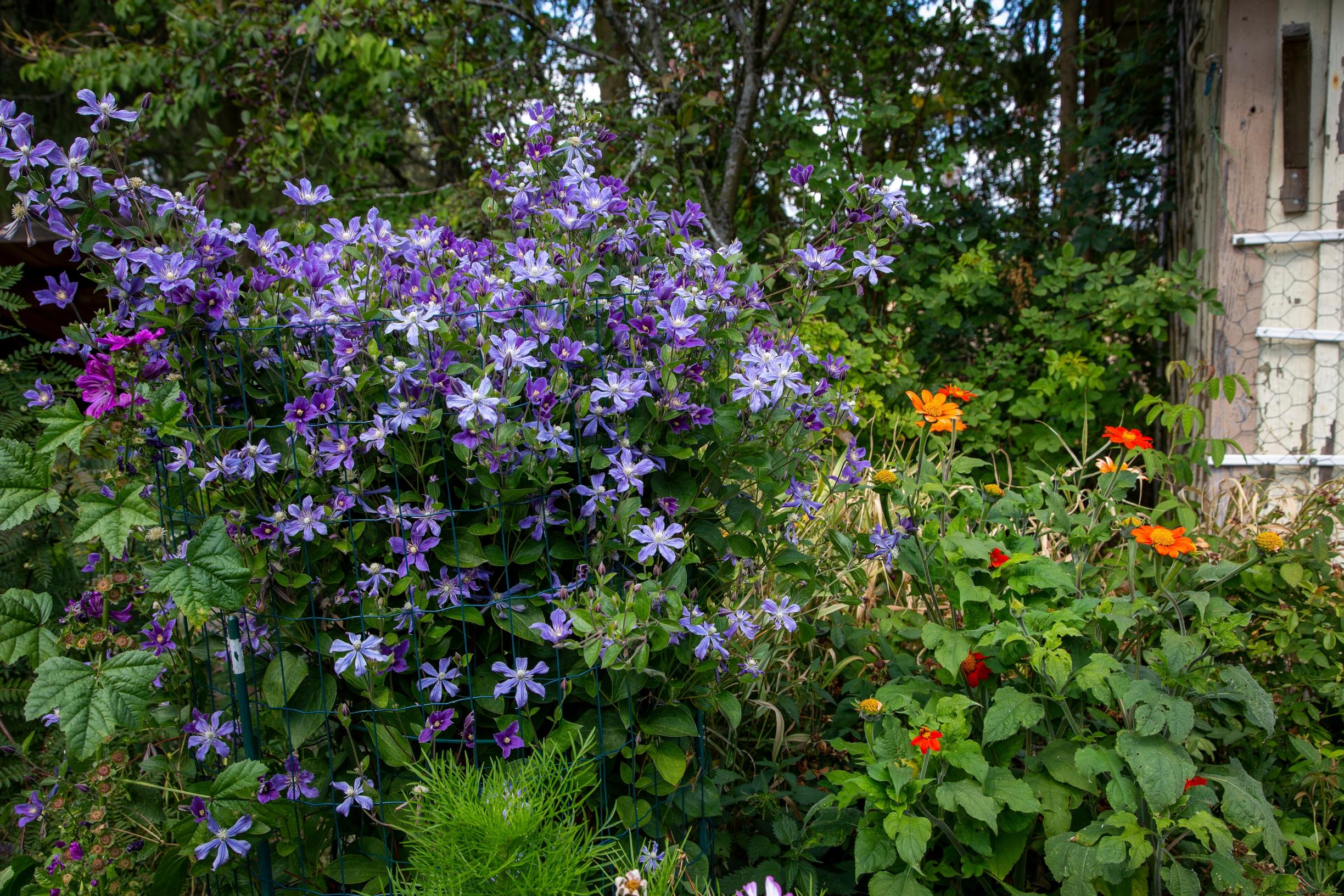
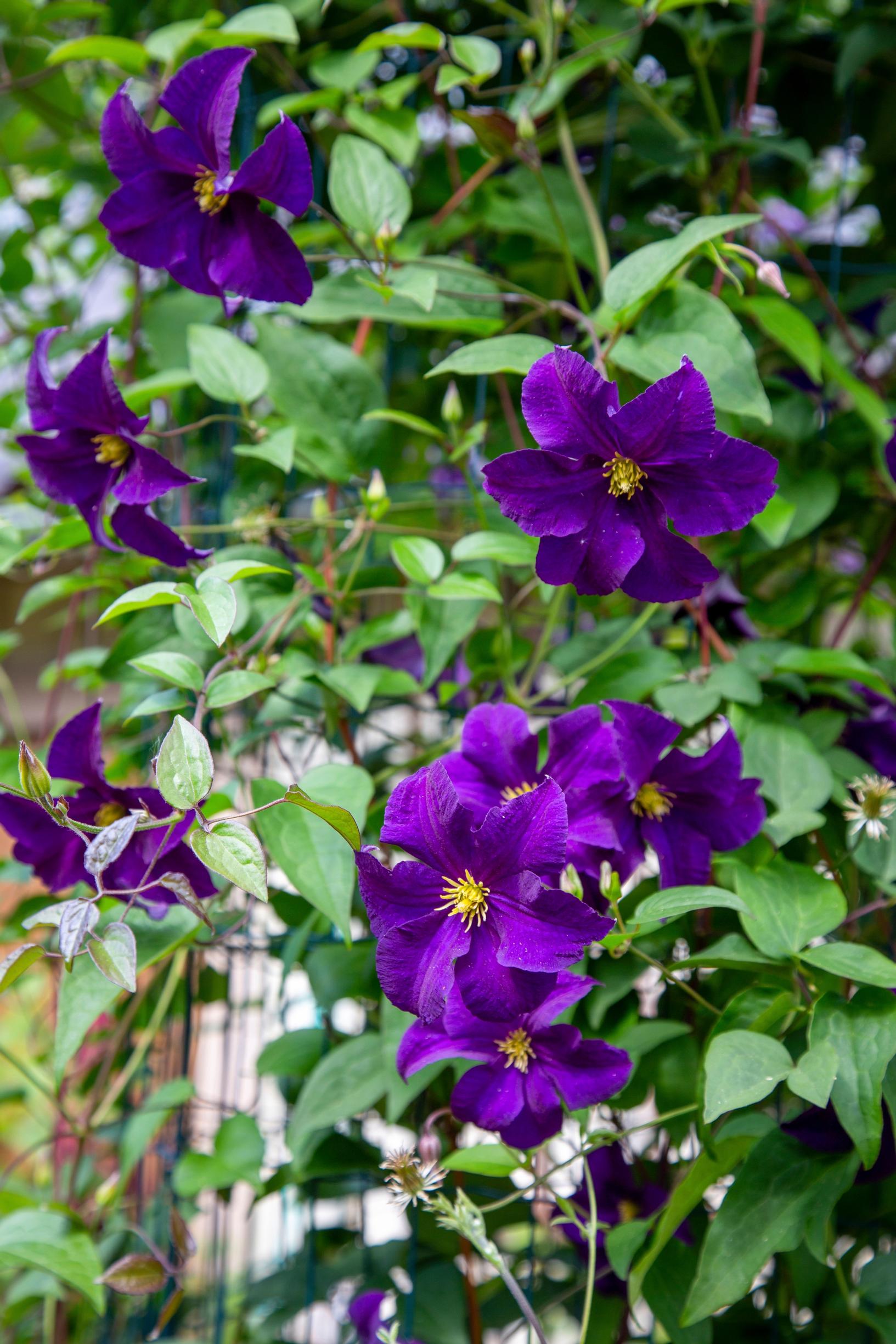
Have you had to deal with common clematis problems like wilt disease and the clematis sawfly in your garden?
I’ve had wilt disease in my clematis during rainy, cool summers. I cut any fungus-browned stems back to ground level and add sand around the plant’s base. That seems to help a bit. Now and then, I see clematis sawfly larvae on the vines, but I just shake them off onto the ground and put them on the patio for the birds. The birds also hunt for larvae among the clematis themselves. It’s worth having nesting boxes around, as the birds are wonderful allies for clematis and the whole garden.
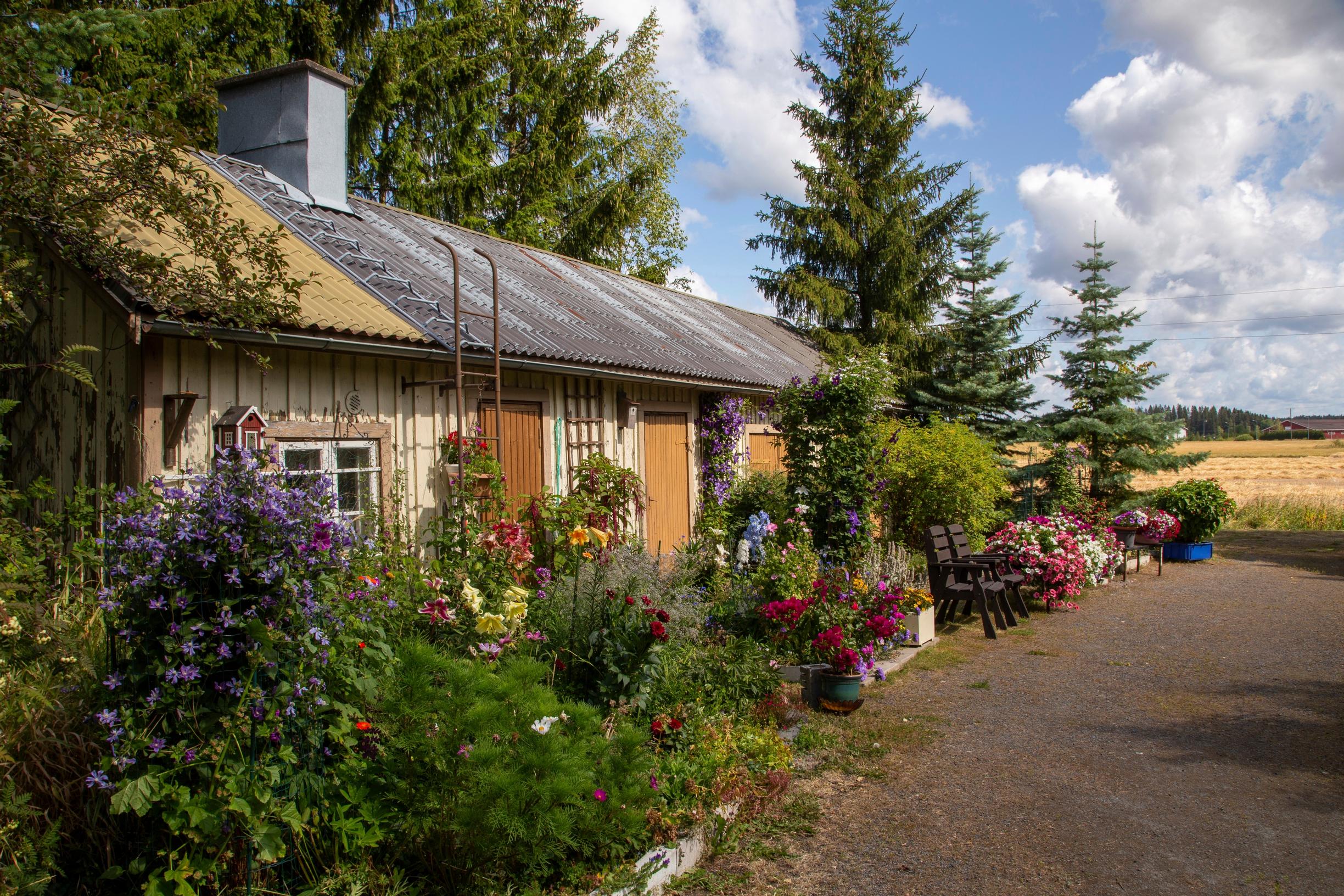
Merja’s late-summer clematis
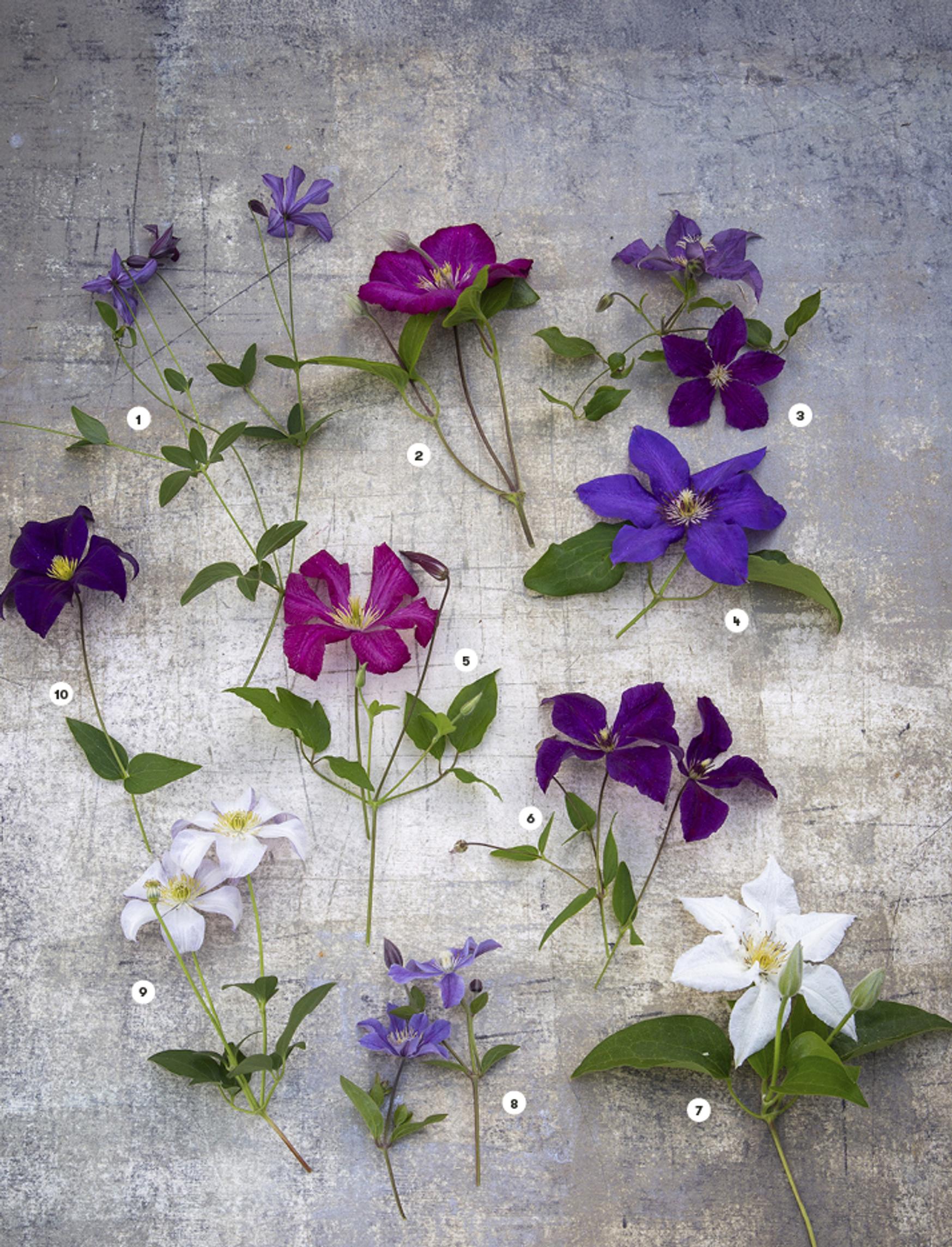
1. Purple clematis, Clematis viticella
A small-flowered, hardy wild species that thrives in zones I–V (Finland’s mild to fairly cold winter areas, roughly USDA zones 6–4). It starts blooming in mid-summer and continues into fall.
2. ‘Rouge Cardinal’, a Clematis hybrid
This cultivar enchants with its velvety red flowers measuring 10–15 centimeters (4–6 inches). Winter protection is recommended. Suitable for zones I–III (Finland’s mild to moderate winter areas, roughly USDA zones 5–6).
3. ‘Vostok’, a Clematis hybrid
The flowers lighten as they open, and their shade changes according to the light and weather. Winter protection is recommended. No zone recommendation available.
4. ‘Uno Kivistik’, Clematis hybrid
Developed by the Estonian Kivistik family, this variety can reach three meters (10 ft) in height in a good spot. Winter protection is recommended. No zone recommendation available.
5. Clematis ‘Madame Julia Correvon’, Clematis Viticella group
This late 19th-century French cultivar is vigorous and profusely blooming. The flowers measure about 5–10 centimeters (2–4 inches). Suitable for zones I–IV(–V) (Finland’s mild to cooler winter areas, roughly USDA zones 6–4, sometimes 3).
6. Clematis ‘Polish Spirit’
This Polish cultivar has large, striking flowers. Suitable for zones I–III(–IV) (Finland’s mild to moderate, occasionally cooler winter areas, roughly USDA zones 6–4).
7. ‘Saalomon’, Clematis hybrid
This variety grows to about 1.5 meters (5 ft) and also does well in partial shade. Winter protection is recommended. No zone recommendation available.
8. Clematis ‘Arabella’, Clematis Integrifolia group
This profusely blooming, compact variety needs a support for the stems to be tied to. A reliable cultivar that also works as groundcover. Suitable for zones I–V (Finland’s mild to fairly cold winter areas, roughly USDA zones 6–4).
9. ‘Huldine’, Clematis hybrid
The white petals with mallow-colored veins are especially beautiful when backlit. It needs plenty of light and warmth. Suitable for zones I–III (Finland’s mild to moderate winter areas, roughly USDA zones 5–6).
10. ‘Viola’, Clematis hybrid
A large-flowered, late-blooming hybrid with deep purple blossoms. Winter protection is recommended. Suitable for zones I–IV(–V) (Finland’s mild to fairly cold, sometimes colder winter areas, roughly USDA zones 6–4, occasionally 3).


